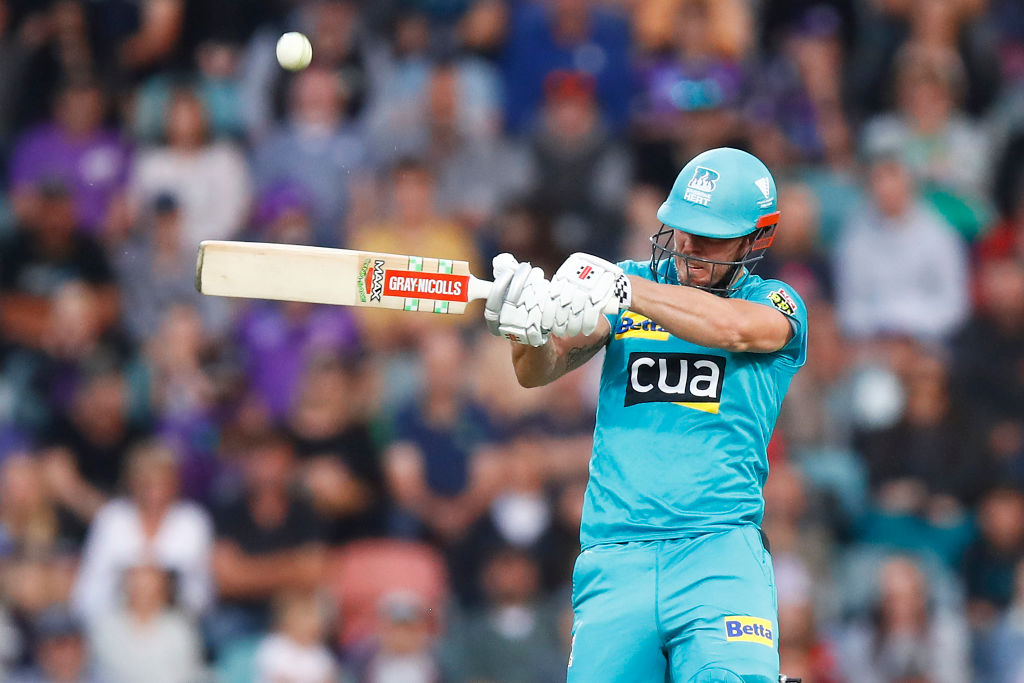Funky innovations are fine, but BBL won’t be elite until the standard of cricket improves
Sometimes you wonder if the Big Bash League (BBL) is indeed run by Vince McMahon. Time and again, the BBL outdoes itself and comes up with funky, out-of-the-box innovations and constantly has the urge to do something out of the ordinary to surprise and please its fans.

Vince is no different. WWE, of late, has explored every vivid possibility there is - be it an angle exploiting a wrestler’s personal demons or making four built athletes play golf and axe throwing - in a desperate attempt to ‘interest’ the fans, thinking that these funky innovations would invoke curiosity and keep people glued to the television. But both parties seem to be overlooking the one fundamental aspect that drives success in the entertainment business: the product itself, in its purest form. WWE has moved away from using wrestling as its main tool to elevate its popularity while the BBL, with every passing year, seems keen to project itself as a box of entertainment rather than an actual sporting event.
On Wednesday, ESPN Cricinfo reported that the organizers of the BBL are looking at bringing radical changes to the product, which includes a plethora of rule-changes, that would make the competition less of a T20 tournament and more of a reality show. According to the report, BBL's managers, including the tournament head Alistair Dobson and CA's executive in charge of events, Anthony Everard, have proposed a raft of changes which include the following:
- Bonus points available to teams for their progress at the 10-over point of an innings
- Substitutions also allowed within that same period
- Powerplay split between the first four overs of the innings and two overs floating elsewhere
- Free-hits for the bowling of wides
- The addition of extra breaks for advertisements and player strategy after every five overs.
- A draft for overseas players is also expected to be up for consideration
Now before we get into why the approach of the BBL to ascend to the top of the market is wrong, it is imperative that we squash and shame the absurdity of some of these suggested changes, starting with free-hits for wides. It is, in fact, astonishing how people who run the sport constantly feel that the only way of making the game more entertaining is by tilting everything in favour of the batsmen.
As if free hits for all kinds of no-balls, smaller boundaries, bigger bats and field restrictions were not enough advantage for the batsmen already, BBL organizers now feel the urge to introduce free hits for wides, because hey, a bowler who is not flawless deserves to be put through hell and beyond. Now that’s fine, but I wonder why the same does not apply to a batsman. I mean, if a bowler needs to be punished for bowling wides, then surely a batsman who is either beaten by the bowler or who edges one to the third man, should have a few runs detected from him because he made a mistake? It’s not fair to systematically oppress the bowler-kind alone, is it?
The ‘bonus point at the 10-over mark’ rule is also a bit ambiguous and dodgy. As of this moment, I could only see two ways through which this rule can come into fruition - you give a batting team a bonus point for scoring ‘x’ number of runs within the first 10 overs, or you give the bowling side a bonus point for taking ‘x’ number of wickets or restricting the batting team within a particular score inside the first 10 overs. Should this be the case, though, would it not be problematic, due to the fact that teams play on all sorts of wickets? Wouldn’t this provide an unfair advantage to the teams who find themselves constantly playing on batting (or) bowling friendly wickets?
The ‘substitute’ rule, on the other hand, seems fine, although it would be interesting to see what kind of restrictions they put on the player who comes in. The ‘strategic breaks’ for advertisements, though, has ‘constantly breaking the flow of the game’ written all over it. That being said, the ‘powerplay split’ rule, however, seems to be the most sensible of the lot, despite it being a tweak that would put bowling sides at the mercy of the batsmen. A draft system for overseas players, too, is something that might be a welcome change.
But ignoring the implications of all these rules, it is important to talk about the single biggest takeaway from these suggested changes - the BBL have got it all wrong in their approach to become a powerhouse in the game. The fact remains that they can tweak the playing regulations all they want to make the product look more interesting, but all that will count for nothing as long as the actual quality of cricket on the field remains stale.
Instead, there is only one solution for the competition to keep itself relevant, interesting and sustainable in the long term: to enhance the quality of cricket; to make the ‘action’ itself the USP. The newly-expanded 2019/20 season of the BBL witnessed a record 61 games being played, yet such was the underwhelming nature of the competition that an almost-washed out final accounted for nothing.
Seldom did people tune into the league for the actual cricket that was played; often it was just people tuning in to keep an eye on their fantasy-team players or on other occasions, it was just to ‘stay updated’ about proceedings. The tournament could bring in all sorts of funky innovations it wants, but if the cricket that’s played on the field mirrors the 2019/20 season, then it will soon fall behind the CPL, PSL and Vitality Blast. Hell, it might already be behind both the CPL and PSL.
There might be a solution for this, though - getting on board the best players in the country for at least 75% of the tournament. The BBL, as of this moment, is the only elite T20 competition in the world that does not have all the best cricketers from its own country partaking in it and setting that record right might be the first step in adding some credibility to the tournament.
In Warner and Starc, Australia have two of the best T20 cricketers in the world, yet neither of these two men have featured in the BBL, their country’s premier T20 competition, in over 5 years. This could, in turn, give birth of a lot of complications with respect to the national team’s scheduling, but compromises might have to be made, for otherwise, no matter how hard it tries to reinvent itself, the BBL will never be an elite tournament unless and until it plays host to the best cricketers in the country.
Cricket Australia and BBL organizers do not have to look farther than their fiercest rivals, the Indian Premier League (IPL), to realize this. The mid-innings strategic time-out aside, the IPL, despite carrying the reputation of an ‘entertainment overflow’ extravaganza, has built its brand sheerly on one aspect: the quality of cricket that it has given its consumers. This has, of course, only been made possible because the country has a dedicated two-month window for the tournament, and ropes in every top cricketer in the world; for the BBL to succeed, there might be an intrinsic need to replicate the same.
A touch of funk to any product is always welcome, however, the moment you cross the line with your innovations - as the BBL is threatening to do - you have a problem in your hands. The BBL might now be replicating the WWE, but the organizers must soon realize that they are not far away from becoming WCW - a non-existent entity.

Comments
Sign up or log in to your account to leave comments and reactions
0 Comments